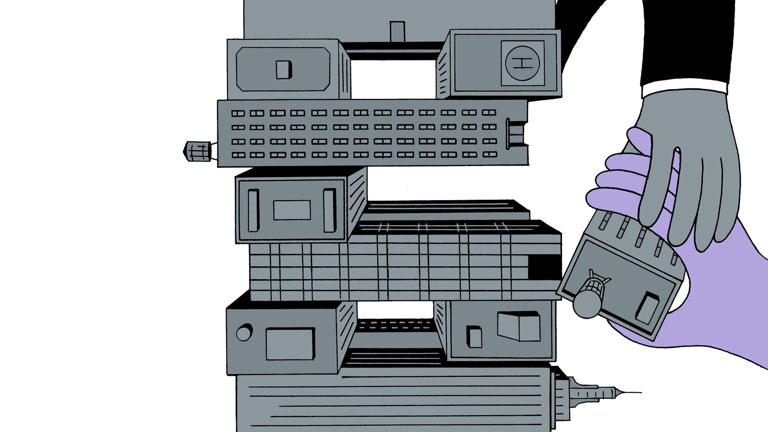Private equity firms have long been the domain of enormous pensions, endowments, and sovereign wealth funds. However, nearly a decade ago, major players like Blackstone, Starwood Capital Group, and KKR began to shift their focus towards smaller investors. This move allowed these firms to significantly expand their asset bases and increase fees, offering individual investors the chance to park their money with Wall Street’s elite. For many, the opportunity seemed too good to pass up, even with the understanding that withdrawing funds could be challenging in tough times.
The appeal of private equity firms, bolstered by stellar track records—including resilience during the 2008 financial crisis—was undeniable. One particular investment vehicle that captured the attention of these investors was private real estate investment trusts, or REITs. These REITs, which own commercial or industrial properties, offered substantial dividends derived from rental income, making them highly attractive, especially in a low-interest-rate environment. From 2017, when Blackstone introduced one of the first REITs backed by a private equity firm, until June 2024, these private REITs raised over $110 billion, solidifying their status as a hot alternative investment.
However, the allure of these investments began to wane in 2022 as the Federal Reserve rapidly increased interest rates. This shift made traditionally safer bond investments more appealing, with returns nearing 4%, while also putting significant pressure on the commercial property market that many REITs rely on. As a result, private REITs faced increased scrutiny, particularly regarding how they managed to report high returns when publicly traded competitors were experiencing losses. Questions arose about the sustainability of their lucrative dividend payments and the accuracy of their property valuations, especially in a declining commercial real estate market.
Unlike publicly traded REITs, which can be easily exited by selling shares on an exchange, private REITs controlled by private equity firms require the fund itself to buy back an investor’s shares. To maintain stability and avoid selling properties in weak markets, these private REITs often impose strict limits on withdrawals. For instance, Starwood, managing one of the larger private REITs with about $10 billion in assets, reduced its quarterly redemption limit from 5% to just 1% in May 2024, citing insufficient cash to meet all withdrawal requests without becoming a forced seller in a soft market.
Such restrictions have heightened investor anxiety, leading to a spike in redemption requests across the sector. Despite assurances that these limits are designed to protect investors during volatile periods, the increase in withdrawal requests has led to concerns about the future of non-traded REITs. Some analysts, like Kevin Gannon, CEO of Robert A. Stanger & Company, predict that up to half of the money invested in non-traded REITs could be redeemed within the next year.
A key metric for REIT investors is the net asset value (NAV), which reflects the value of the real estate portfolio after accounting for debt. For publicly traded REITs, NAVs have dropped approximately 14% since the end of 2021, while private equity-backed REITs have seen a more modest decline of about 4%. Publicly traded REIT indices, such as the FTSE Nareit Index, have also experienced significant drops, with declines of around 22% from the end of 2021 to early August 2024. In contrast, Blackstone’s private REIT reported an annualized return of 4.1% since 2021.
The performance of private REITs is determined by appraisals, which the SEC has warned may not always be accurate or timely. Critics argue that private REITs may have delayed recognizing declines in property values, thereby borrowing from future returns. This concern is compounded by the opacity of the commercial property market, where sales and price changes are not as easily observable as in the housing market.
Despite these challenges, Blackstone has managed to meet redemption requests, partly due to a unique deal with UC Investments, the investment arm of the University of California. In January 2023, UC Investments committed approximately $4.5 billion to Blackstone’s REIT, with a promise to remain invested for six years. This deal, which included preferential terms for UC Investments, has allowed Blackstone to maintain liquidity and honor higher-than-usual withdrawal requests.
Nevertheless, questions persist about the sustainability of the dividends paid by private REITs. Analysts and investors have expressed concerns about how these REITs can continue to pay dividends that exceed the cash flow generated by their properties. Blackstone has countered that many investors choose to reinvest their dividends in shares rather than cash, ensuring positive cash flow.
In light of these challenges, some firms, like KKR, have taken steps to support their NAVs, including a plan to cancel shares if the price remains below a certain level by 2027. The broader real estate market and REITs could potentially benefit from an anticipated interest rate cut by the Federal Reserve, expected as soon as September 2024. Lower rates could enhance REIT valuations and stabilize the market.
In the meantime, the withdrawal restrictions imposed by private equity firms are seen by some, like Bank of America analyst Craig Siegenthaler, as necessary to help REITs weather the current storm and emerge stronger once interest rates stabilize and the real estate market recovers.
